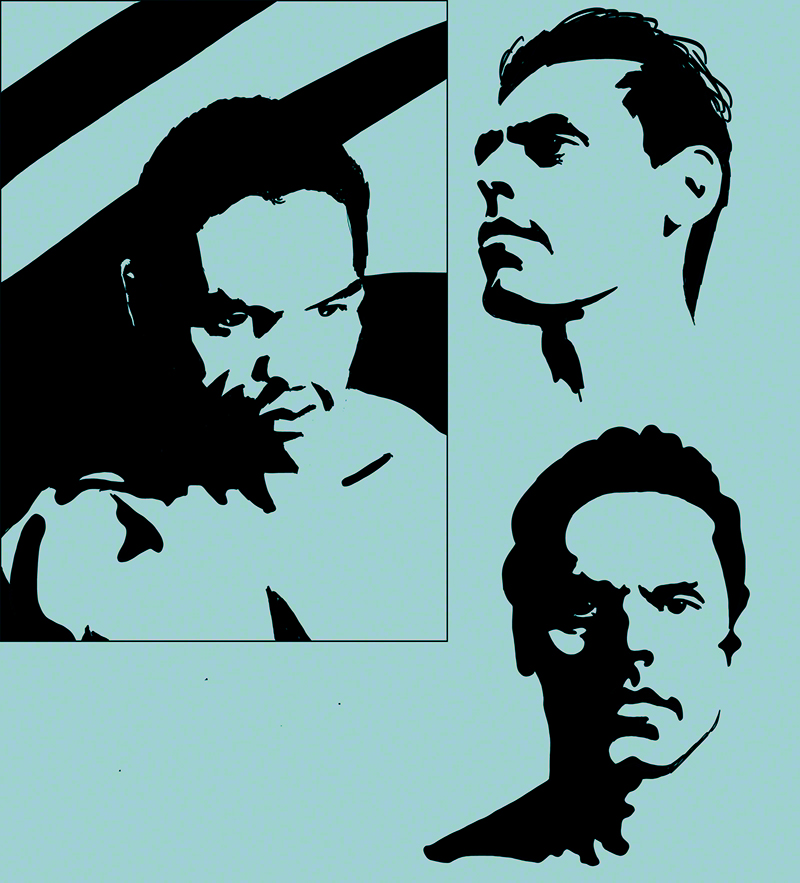6th week, and I’ve got something there (not on my nose)
Squint! Do it, I mean it, and look around you.
Harder… no, of course not to the point that you can’t read me anymore – very funny, ahum – but enough that you see the world vaguely through your eyelashes (and guys do have eyelashes like girls, so no excuse!)
What do you see? Answer: not much! And that is perfect!
You probably see less colors, but you can tell shadows and non-shadows, and this allows you to guess shapes.
Shadows and “non-shadows”? what are we talking about? We are talking about values. If you want to see pure values, look at a black and white photo (a photo in shades of grey – and I dont mean from the stupid book/movie).
Every color around you (you can open your eyes now) is made of several elements, one of which is value: in other words: is this color rather like a highlight or a shadow (even regardless of the other colors around it). That is it’s “value”.
Some colors are annoying. You can make a bright light highlight-like blue AND next to it a dark shadowy blue.
Try that with yellow – bright highlight-like is the natural condition of yellow, but how do you make a yellow shadow??? Well, you can desaturate (meaning make more grey) the yellow, there are other ways that we’ll discuss later. For the moment what we want to do is simplify what we see by squinting, and grouping shadows together and the non shadows (midtones and highlights) together in another group.
Look at somone’s face, for some zones it’s going to be obvious: if the person is lit from above: shadow under the nose and in the eye sockets, ok, the high part of the forehead is non-shadow, right… but the chin, and the cheeks…. errrrrr….. difficult to choose between the 2 possibilities.
This is where knowing your planes of the head helps!
Cheeks: if you know your planes, you’ll know which part is facing up to the light and which one is perpendicular to it, and you can through your imagination exaggerate that tendency, and group the zone with either shadow or non-shadows.
I won’t go into reflected light here, as my work/assignment is not there yet, and might in fact ignore reflected light (hey, it’s my styl,e I do what I want!)
Talking of assignment, here is mine for the week, once more I apologize for the white of the paper being an odd color but digimarc watermarking doesn’t like white (if you know how to solve this, let me know by all means!!)
Took me a while… in fact to be honest took me a freaking while, in order to decide what goes black what goes white.
I tried playing with some background on the left to help read the form of the head, but on the top right I left a lot of lost edges, his nose and forehead outer edge are NOT defined by a line, but your brain reads it right, not an easy trick to pull, but I love the result 😀
Now for the real topic of this blog entry: what Glenn Vilppu had to say about this.
Well, like I said in the title he thinks I’ve got something there. By that he means a way of describing form, I’m not the first artist to use this method, far from it, but the most interesting thing is it proves that I have made mine the planes of the head. Wahoo, finally I do feel at ease with the topic, it’s true, and all thanks to Glenn’s patience and guidance.
The shadow shapes under the noses are not right, he told me, and now that he told me I see it: it’s wrong, too massive, not descriptive enough of the rounded form of the mouth barrel.
Also the black supposed to describe the neck and upper part of the shoulders is not satisfactory, it doesn’t describe (like last time grrrrrrr) the real planes. Interesting: I have to work on the planes of the neck and torso, or I have to be more single-minded, I have a nasty suspicion that once I finally finished the faces I added a bit of neck and shoulders quickly and carelessly, thinking “oh whatever, close enough” which is NOT acceptable.
So my work is clear for next week: barrel of the mouth and nose shadow – let’s be precise on that, also let’s make the neck and shoulders as “nice” as the head. That’s the great thing with having feedback from a master: he tells you what to work on, and you just have to do it, instead of spending hours pondering “something is wrong but what?”
Which leads me to a terrible question: what about applying this style to female faces?
Read next week and find out why I’m shaking just thinking about it!
Draw a lot, and see you next week
Anton

